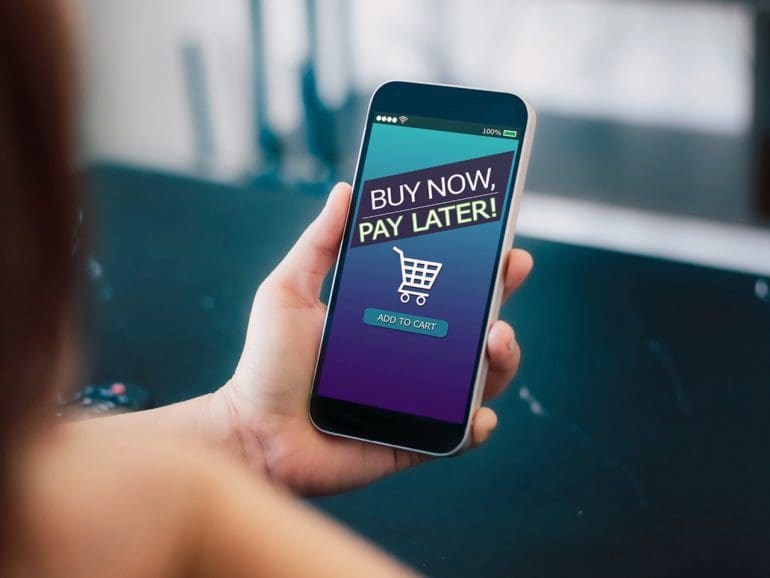The use of buy now, pay later (BNPL) services has exploded over the past few years, and only now are we beginning to learn the impact of that boom.
In March, the Financial Health Network released Buy Now, Pay Later: Implications for Financial Health. The report, consisting of data from a survey of 5,033 American households, reveals some interesting trends about who is using the service.
The majority of BNPL customers, 70%, use short-term financing with no interest, while 21% saw repayment periods of six months or more with no interest. Only 11% were in plans of six months or more where interest was charged.
Unlike the results of other BNPL surveys, which suggest that up to half of Americans have used BNPL, this survey found that only 10% used it.
The differences may be explained by methodology, the authors said. The Financial Health Network survey was administered to the University of Southern California (USC) Understanding America Study (UAS) panel, a nationally representative, probability-based internet panel constructed via address-based sampling.
The survey asked questions about households’ use of various financial products and services. The responses were weighted to reach a nationally representative sample concerning gender, race/ethnicity, education, age, and census region.
BNPL users skew to younger, less financially healthy
While 10% of the overall population have used BNPL, 20% of those between 18 and 25 have tried it. That rate drops to 16% for folks aged 26-35 and 13% for respondents aged 36-49.
Rob Levy, the vice president of research at the Financial Health Network, said younger and less financially healthy people tend to use BNPL. There are several reasons, including younger groups’ stronger preference for online shopping.

Lack of credit card ownership may be one factor but is not a dominant one. Only 23% of BNPL users do not have credit cards, similar to the 26% of non-BNPL users who do not.
“BNPL users are more likely to have sub-prime credit scores,” Levy said (43% of BNPL users are subprime instead of 24% of non-users). “For some, it is a more affordable credit product, especially for the 70% who make four payments with no interest. It makes some purchases more accessible than they otherwise would be.”
“Having no credit card is part of the story, but the ease of use right there as they are making a purchase is powerful.”
BNPL use is higher in minority households. One in six (16%) Latinx households and one in eight (12%) Black households report using BNPL. Only nine% of white homes have. Black families more frequently reported difficulty making payments or missing them altogether at 13%.
BNPL warning signs on the horizon?
Like other credit products, Levy said that BNPL leads people to spend more than they otherwise would. The big question is what they would do if no credit were available? That is a tricky question to answer.
There are clear concerns about people using BNPL multiple times within a short period. Almost half, 46%, have used it three or more times in the last 12 months. With the survey conducted before the end of the 2021 holiday shopping season, Levy wouldn’t be surprised if that rate had risen.
What happens when it becomes three or more BNPL uses? Six or more? Levy fears that will only extend the challenges of living paycheck to paycheck. If the user engages in BNPL through separate providers who don’t communicate with each other, there is no clear picture of the risk. There are discussions about the relationship between BNPL and other credit products and how to include BNPL in credit scoring and underwriting.
“Hopefully, the industry will evolve and include BNPL into the scoring,” Levy said.
Future influences
Financially vulnerable households are much more likely to use BNPL, with 18% trying it (compared to five% of financially healthy ones). The average family that used BNPL owed $330.
What if any role will higher interest rates play? Levy said that with so many folks using zero-interest plans might not be significant. If credit card interest rates rise and BNPL stays the same, it becomes a more attractive option.
“If the inflation rate rises and the price of goods goes up, then consumers might dial back their purchases,” Levy said.
Levy said the concern about the risk of BNPL products is genuine, adding he’s never seen the popularity of a product increase as quickly as this has.
Clear benefits drive that popularity, and users understand what they are getting into, unlike what some industry watchers suggest. Virtually all (99%) said they understood the terms and conditions.
A small minority struggles to make payments, but it adds up to millions of people and dollars. Levy said eight% of people report having difficulty making their BNPL payments.
Remember, BNPL is still new. If it encourages people to spend more and take on debt, even if no interest is being paid, it will impact a family’s financial health.
Many are already struggling, does BNPL make it worse?
He brings the conversation back to how many families are financially struggling — one in three live check to check.
Financially vulnerable households struggle to save, borrow and plan. Such homes are almost twice as likely to use BNPL, and 77% of users have held credit card debt in the last year, compared with 49% of non-users.
Even as only one in nine users report having to pay interest, Levy estimates Americans have paid $1 billion in fees and interest.
One in three said if the option were not available, they would not have made a purchase, roughly equal to the 33% who said the same about credit cards (the debit card rate was 25%).
The numbers are starker when comparing the financially vulnerable with more healthy households. While only seven% of the economically beneficial purchased only because BNPL was available, 61% said they made one because of BNPL.
“Forty-seven percent of users said that the availability of BNPL led them either to make a purchase they otherwise would not have made or to spend more than they would have without (it),” the report states.
“This suggests that while BNPL may act as a stand-in for credit or debit card purchases in some cases, BNPL may have triggered purchases or incremental spending outside consumers’ normal spending patterns.”


